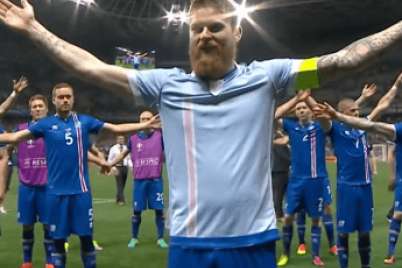
Talent development vs. talent identification: Give kids a chance
The tryouts for the regional “select” team are next week, and your child’s coach is singing the glories of playing on the super team with the best-of-the-best. There’s prestige and status, and something more: He says this is the fast track to turning pro!
Wow. It’s a thrilling thought. Play with this team, the coach assures you, and your child is headed for the top ranks of professional hockey — or soccer, or basketball, or tennis, or tiddlywinks … or whatever the sport is.
There’s only one problem with this picture: it’s a team of 9-year-olds. When next week comes, the coach will be selecting “talent” from a group of kids who haven’t even started their growth spurt.
It simply can’t be done.
Or put a little more delicately, it can’t be done reliably. As talent development programs around the world are showing, it isn’t possible to even start predicting future “talent” as measured in strength, speed, skill, and decision-making until kids are in their teens; as a general rule, between 14 and 20 years.
The late bloomers
Yes, Gretzky emerged early in hockey. So did Lionel Messi in soccer. But they are the exceptions. There are many more superstars who emerged only later — and often after being cut from select teams and junior development programs as kids.
Soccer and basketball feature regular examples of top professionals who were cut from youth teams because they were too small, or too slow, or appeared not skilled enough. (Owen Hargreaves, the Canadian-born soccer player who ended up being a star playing for England, is a good example.) But they stuck with their sport, and later they were fortunate enough to get “discovered”.
Notably, with most of these stories of famous late bloomers, we learn that they were cut in their teens. It should therefore beg the question:
If we can’t reliably select long-term talent among teenagers, how can we imagine predicting talent among a group of 9-year-olds?
The difficulty in identifying talent
In identifying child talent, the biggest challenge relates to relative age and developmental age. If your child happens to have a younger relative age or developmental age than the rest of the kids, he may look less skilled and less talented than his peers simply because he is less strong, less fast, and less athletic at this age and stage of maturation.
In reality, your child might have the potential to become the greatest athlete in history by age 18. But you might never find out. Because if he gets cut at age 9, and subsequently put in a poor program with weak coaching and poor training, he will miss the most important years of development. Or he might just drop out of the sport altogether, and be forever lost to the game.
Emphasize talent development
The pitfalls of early talent identification can be remedied with a “talent development” approach. Rather than trying to select talent at age 8, 9, and 10 years of age, the ideal sport program will provide excellent coaching and equal playing time for all kids and see where they land later.
In soccer, for example, top development countries such as Germany and the Netherlands only start to select talent pools around age 11. And they don’t slam the door on the rest of the kids. They still provide opportunities for kids to play, get better, and be seen later. They know that there is ample time for kids to grow, develop, and change through their adolescent years.
Yes, select teams can be part of development
Select teams can and should be part of the development process in kids’ sports. The question is when.
In most sports, talent identification starts to make sense as kids enter their teens and begin to mature physically, emotionally, cognitively, and socially. It’s also an appropriate way for kids with possible talent, and a strong desire to compete, to start to experience increased challenges in competition.
But what about the other kids? Given the number of star athletes who have emerged only later in adolescence, or even their 20s in some instances, it makes sense to continue providing quality coaching, training, and playing opportunities to any kids who are keen to play and want to get better. (This approach is one of the keys to the Long-Term Athlete Development model.)
You don’t want to cut a future star before they’ve had time to shine, nor do you want to drive a kid out of a sport because they didn’t “make the grade” at age 9. Otherwise you’re not only selling the kid short — you’re potentially depriving the game of a future superstar.






What is the purpose of sport for youth?
To have fun, build character and life lessons. Learn the value of hard work, team work, compassion etc.
I completely agree with this. I see kids dropped down to Lower teams and kids that aren’t ready emotionally at age 10/11 yrs brought up to so called high performing teams in my sons football club Joeys in Sallynoggin and the lower teams get poor coaching and of course drop outs. It’s so hard on the kids. The funny thing is, often the fathers are the coaches and they know it’s wrong but are afraid of the clubs management and ethos, to take a stand. A lot of the coaches were great football talents themselves that never made it possibly because they didn’t make the cut at age 9…or scored goals and made the cut but missed in on proper skill advancement and training. It just ruins the game for everyone. We need new young talent and fresh thinking in good clubs like Joeys to drag the club out of old ways of thinking and modernize the management.
Totally agree coaches at teams should not be allowed to be bias towards their own children and should only coach that year like jn Spain
You hit the nail directly on the head!
I can relate on many levels, at the age of 16 after being cut year after year I finally “made” the team. 40 years later I’m still playing at the elite level.
Coaching my daughters teams we struggled with the requirement to “cut” players at the age of 8 because of the league rules for maximum team size! Come on!! At that age the games are ok but practice is fun,
In fact one player who’s father questioned her “selection” at the age of 10 because he felt she didn’t measure up has turned out to be in the top 3 in the league at age 14.
We must practice what we preach and include all. Further, the best coaches should be coaching at the most influential development ages.